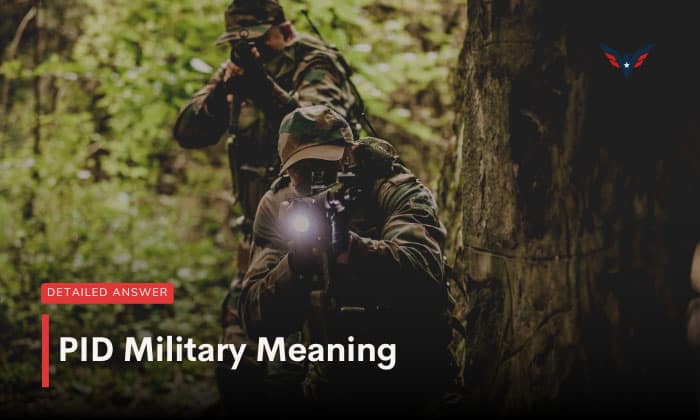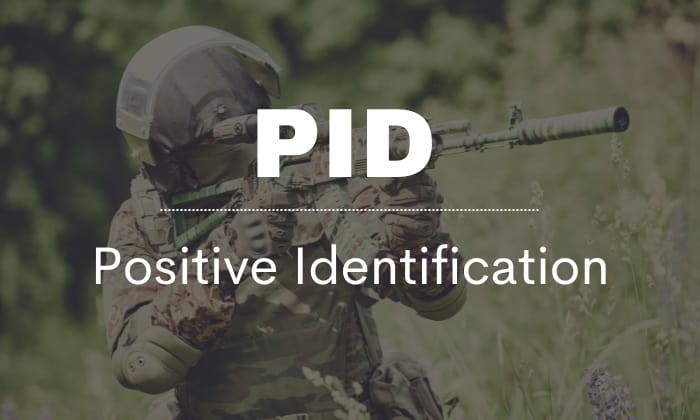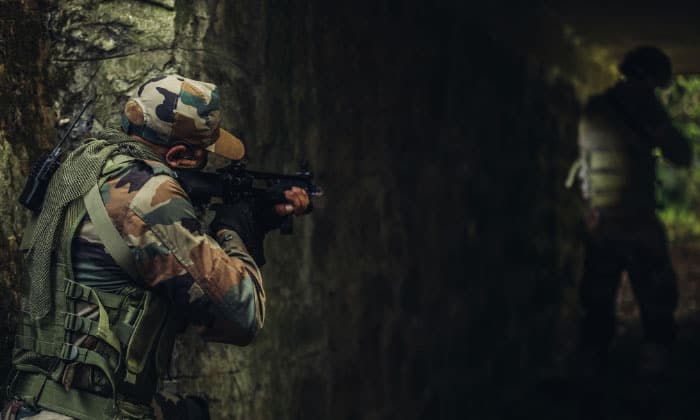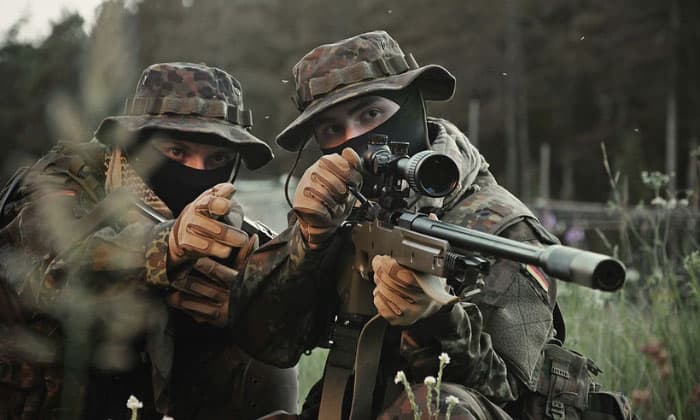In the high-stakes arena of military operations, where split-second decisions can have far-reaching consequences, the importance of accurate identification cannot be overstated. Positive Identification (PID) stands as a vital pillar in the U.S. military’s quest for precision, safety, and the successful execution of its missions.
In this blog post answer, “PID military meaning”, we delve into the definition, significance, and application of PID within the U.S. military. Read on!
Table of Contents
PID Meaning in Military Terms
1. Definition
PID stands for “Positive Identification” and refers to the process of positively identifying a military target, typically in combat situations. It involves confirming the identity of a potential threat or neutral/friendly forces.
It’s important not to mistake military PID with PID government. In the latter case, it’s an acronym for Press Information Department—a government body regulating media information.
2. Significance
- Avoiding Friendly Fire: PID helps in distinguishing between friendly forces and potential threats during combat operations. Hence, it can prevent casualties and maintain unit cohesion.
- Minimizing Civilian Casualties: PID is crucial in minimizing harm to non-combatants, civilians, and collateral damage in the operational area.
- Enhancing Operational Security: It prevents unauthorized access to military installations or sensitive areas.
- Coalition and Joint Operations: In multinational coalitions or joint operations, PID is crucial for effective coordination and deconfliction among different military forces.
3. How It Is Used
PID, though not a slang, is used extensively throughout the U.S. military in various contexts and situations.
- Combat Operations: During combat operations in Army and other branches, PID may involve visual identification, the use of electronic friend-or-foe (IFF) systems, or other means of confirming the identity of potential threats.
- Access Control: Individuals seeking entry may be required to provide identification documents, undergo biometric scans, or answer challenge-response questions to confirm their identity.
- Personnel Management: This may involve using electronic tracking systems or databases to maintain accurate records and confirm the identity of personnel in different locations.
- Joint and Coalition Operations: Accurate identification of friendly forces from different nations or branches of the military is essential for synchronized operations and avoiding fratricide.
Challenges & Limitations
- Fluid and Dynamic Situations: Military operations often take place in fluid and dynamic environments, where conditions can rapidly change.
- Limited Visibility and Environmental Factors: Poor visibility conditions, such as darkness, fog, or inclement weather, can hinder the accuracy of PID. Additionally, complex urban environments or dense vegetation can obscure visual identification and make it difficult to positively identify targets.
- Deception and Camouflage: Enemy forces may employ tactics to deceive or camouflage themselves, making positive identification more challenging. This can include wearing uniforms similar to friendly forces, using decoys, or concealing their true intentions and identities.
- Information and Intelligence Gaps: Insufficient or incomplete information can make it difficult to positively identify targets or individuals. In fast-paced operations or situations with limited intelligence, the gaps in knowledge may impede accurate PID.
Military Operations and the Role of PID
PID Process
- ROE Awareness: Military personnel is trained on ROE for positive identification and engagement criteria, understanding the consequences of misidentification.
- Target Acquisition: The military employs sensors, surveillance, intelligence, and higher command elements to detect and acquire potential targets.
- Observation and Assessment: Personnel carefully observe, assess available information, and form an initial target assessment.
- Confirmation and Verification: Multiple means are used to confirm target identity and threat level, including visual identification, communication, and IFF systems.
- Decision-Making: Informed decisions based on confirmed identification and threat assessment, considering force level, the risk to non-combatants, and potential consequences.
- Engagement or Non-Engagement: If the target meets ROE criteria and is confirmed as a threat, personnel engages with authorized force; otherwise, engagement is withheld.
- Post-Engagement Assessment: Assessment conducted to evaluate engagement results, confirm PID accuracy, and enhance future procedures and tactics.
Equipment & Technology Used
To achieve positive identification, the military employs various technologies and techniques, including communication, electronic friend-or-foe (IFF) systems, biometrics, and standard operating procedures.
PID procedures are regularly reviewed and updated to ensure the highest level of accuracy and reduce the chances of misidentification in complex and dynamic operational environments.
Examples of PID Usage in the Military
- When encountered with unknown forces, troops would first examine their uniforms, flags, and badges. GPS and radio communication may also be utilized.
- When on the sea or in the air, radio is typically the go-to option for identifying friendly forces. That said, military personnel may look for visual cues, such as marking on the boat or aircraft, as well.
- In special operations, where secrecy is of utmost importance, further PID methods may be taken. Two notable examples are the person or force in question must provide their DNA and fingerprints.
- Comes nightfall, visual identification with just the naked eyes would be next to impossible. As such, military personnel would rely on thermal imaging to detect heat signatures.
Related Terminologies and Concepts
- ROE (Rules of Engagement): Guidelines that outline the circumstances and conditions under which military forces are authorized to use force, including lethal force.
- IFF (Identification Friend or Foe): IFF is a system used to electronically identify and distinguish between friendly forces and potential threats. It typically involves transponders or other electronic devices that emit signals allowing for rapid identification and tracking of friendly forces by military systems.
Frequently Asked Questions (FAQs)
What is the primary purpose of PID in military operations?
The primary purpose of PID is to ensure the accurate identification and differentiation of friendly forces, potential threats, and non-combatants.
How do Rules of Engagement impact the use of PID?
ROE provides guidance on when and how PID should be applied in military operations. They establish the conditions under which positive identification is required, set thresholds for engaging targets, and emphasize the importance of minimizing the risk to civilians and friendly forces.
Adherence to ROE and the proper use of PID are critical for ensuring lawful, effective, and ethical military operations.
How does PID contribute to minimizing collateral damage?
Positive identification (PID) contributes to minimizing collateral damage by enabling military forces to accurately distinguish between combatants and non-combatants, thereby reducing the risk of unintended harm to civilians and non-targeted infrastructure.
Conclusion
To recap this PID military meaning blog post, PID is an acronym for “Positive Identification.” It holds paramount importance in the U.S. military, playing a crucial role in enhancing operational effectiveness, minimizing risks, and upholding ethical standards.
PID involves accurately identifying and confirming the identity of targets and distinguishing between friendly forces, potential threats, and non-combatants.

I am Everett Bledsoe, taking on the responsibility of content producer for The Soldiers Project. My purpose in this project is to give honest reviews on the gear utilized and tested over time. Of course, you cannot go wrong when checking out our package of information and guide, too, as they come from reliable sources and years of experience.





